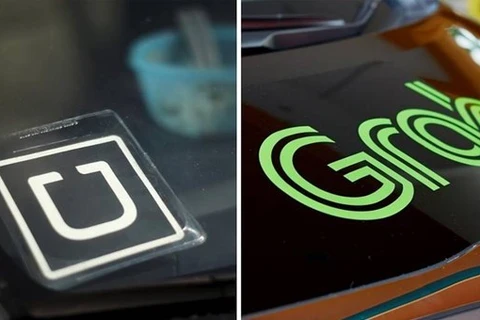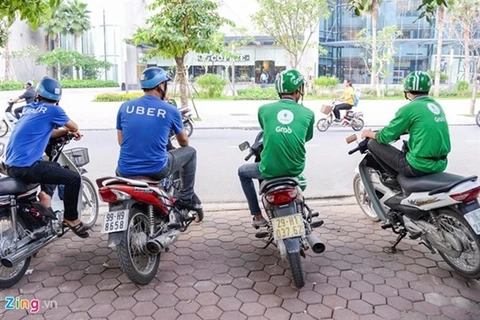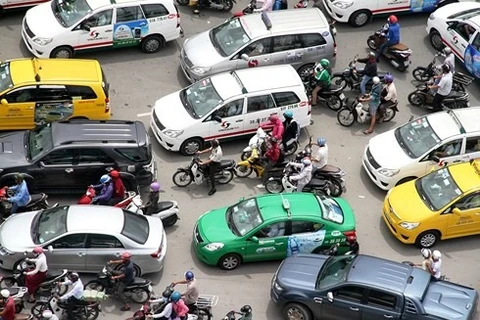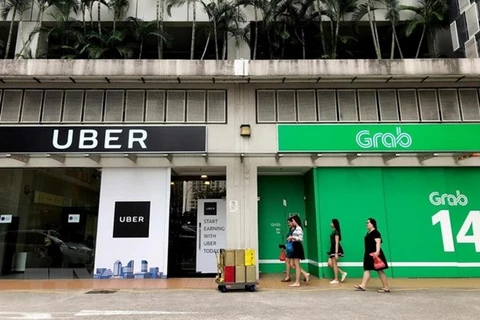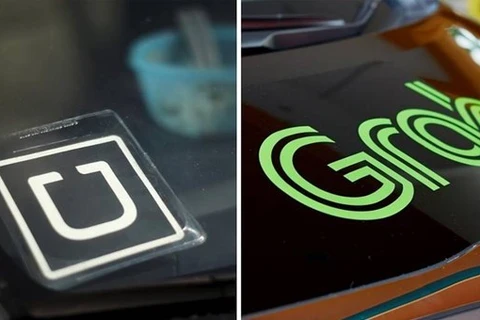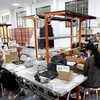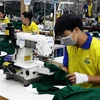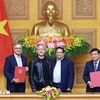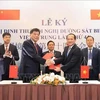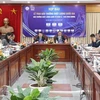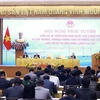 UberMOTO drivers march in Hanoi on April 8 to mark the last day of the ride-sharing company in Vietnam. (Photo: VNA)
UberMOTO drivers march in Hanoi on April 8 to mark the last day of the ride-sharing company in Vietnam. (Photo: VNA)Hanoi (VNA) - A number of drivers who used to work with the ride-hailing company Uber say they are uncertain about their futures after the company closed here last week.
UberMOTO driver Tien Sy had only worked for the company for a month in Hanoi, but says he feels his whole life has fallen apart now they have closed.
“I had a stable source of customers with Uber and was able to make ends meet. I am so disappointed that the company is now closed in Vietnam,” he said.
Uber officially closed in Vietnam on April 8, two weeks after it announced its withdrawal from the market in exchange for a 27.5 percent stake in its Singapore-based rival, Grab.
The two weeks’ notice Uber gave its drivers and employees seems not enough to prepare them for the sudden change. UberMOTO driver Nguyen Thi Kim Cuong in Ho Chi Minh City said she was not ready to switch to other ride-hailing services.
“People told me there were other similar companies out there, but since my husband and I had both driven for Uber for more than a year, we felt so connected to the company,” she told Zing online newspaper.
“At the moment we don’t know what we will do next,” she said.
Not only the drivers, but the former Uber employees in Vietnam are also living in uncertainty.
Although they were all promised jobs at Grab, many see that company as “the enemy”.
“How can we not see the irony, now that we have to try to love the values, the people and the colour that we once disliked? It’s hard just to think about it,” Duyen Pham, a former Uber’s City Operators official in HCM City, wrote on her social media profile.
“We have been fighting for so long, so much prejudice has been formed,” she wrote, referring to the relationship between Uber and Grab. “For many of us, it is better to be unemployed than to work for ‘them’”.
Uber leaving Vietnam without instructing its drivers and employees how to transfer to Grab has posed the question of corporate responsibility to labourers.
Vo Dan Mach, a member of the HCM City Bar Association, told Tuoi Tre (Youth) newspaper that the “sharing economy”, has brought about disadvantages to labourers since no written labour contracts ever existed between Uber and its drivers. (A sharing economy is an economy which focuses on the sharing of underutilised assets via a community-based online platform).
Nguyen Tuan Anh, CEO of Grab in Vietnam, said ride-hailing services like Grab and Uber cannot provide benefits like social insurance, health insurance or training to its drivers like traditional business because drivers are not their employees.
“The relationship between Uber, Grab and their drivers is partnership,” he told Tuoi Tre.
Uber representatives could not be reached for comment.
Since Uber’s office closed in Vietnam on March 27, Grab helped Uber drivers make the switch to their company.
On April 7, a few hours before the Uber application stop working in Vietnam, Grab sent a thank-you email to all of its customers, pre-existing drivers, and new drivers who transferred from Uber.
“To make sure that we reached as many Uber drivers as possible, several Grab employees and driver-partners had gone out to find them, gave them information and invited them to Grab’s support centres before the Uber application ceased to work on April 8, 2018,” it reads.
“Having more drivers joining Grab does not mean there will be fewer customers, because now we have a lot more customers who switched from Uber,” the section of the email addressing the new drivers reads.
“You can increase your income because there will be more rides, and the distribution of the rides will be faster and more effective, now that we are on the same platform.”-VNA
VNA
